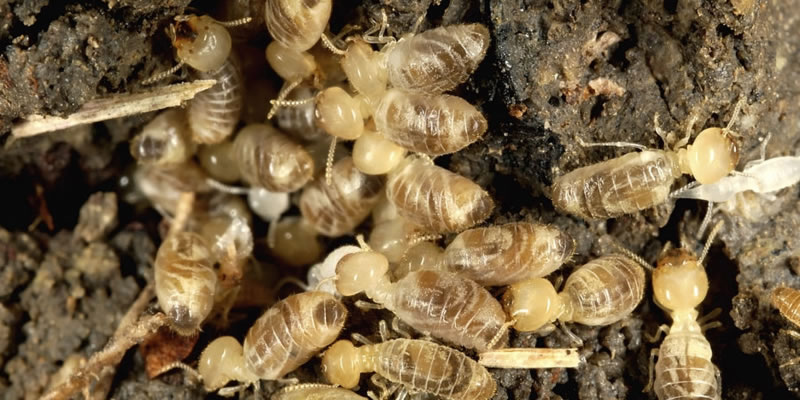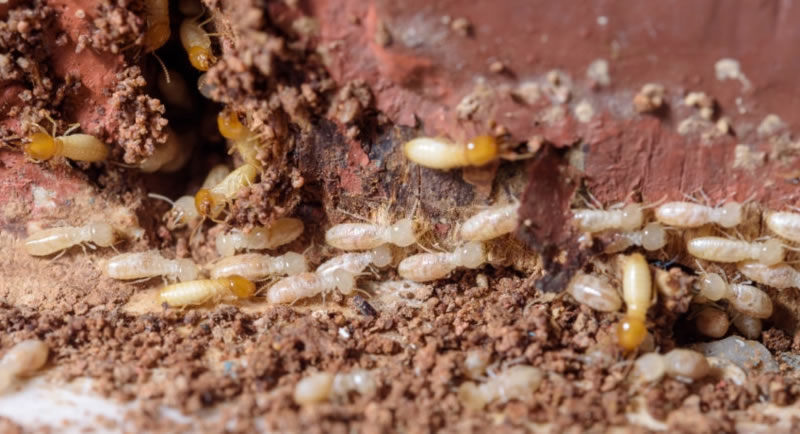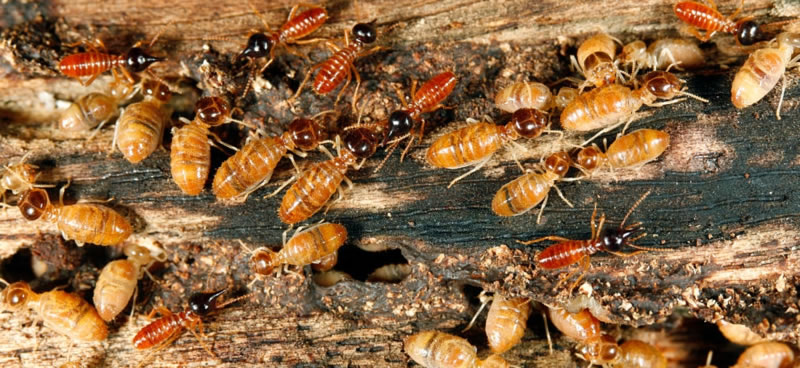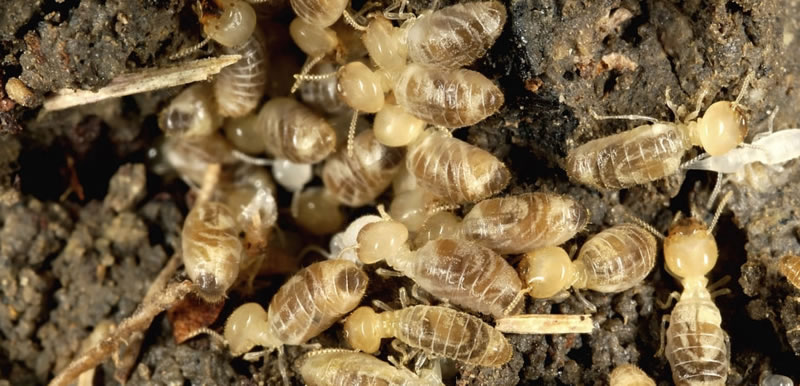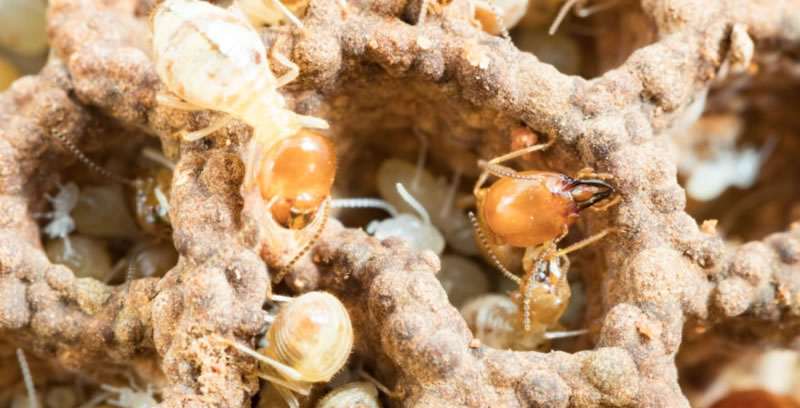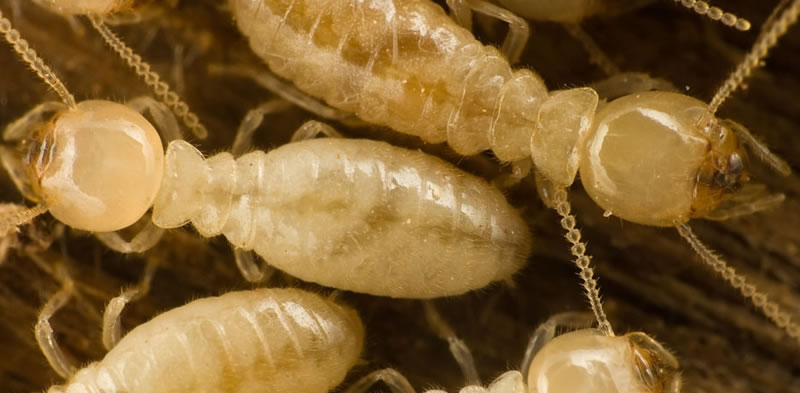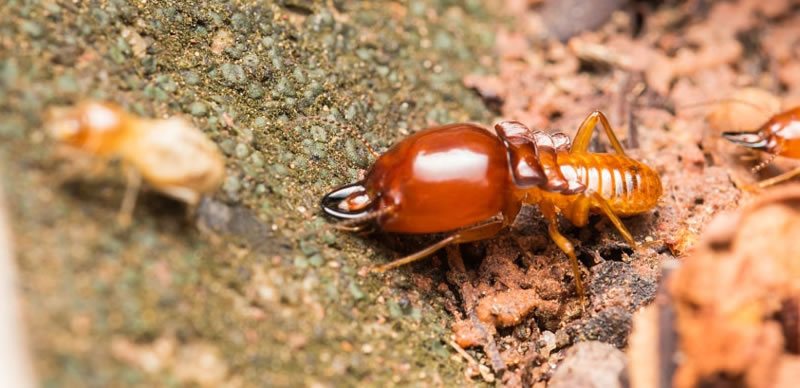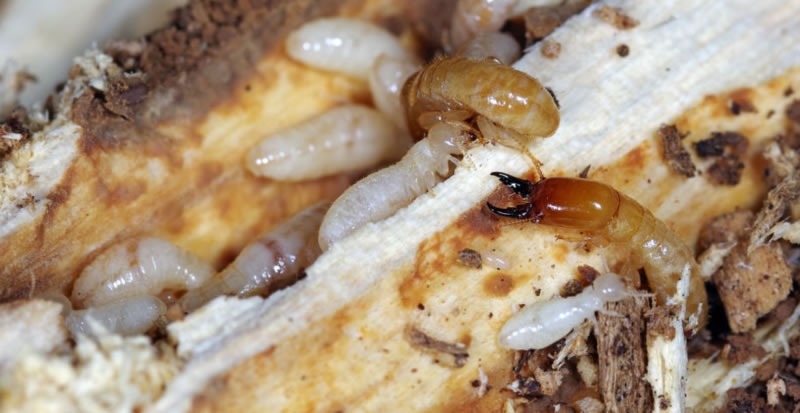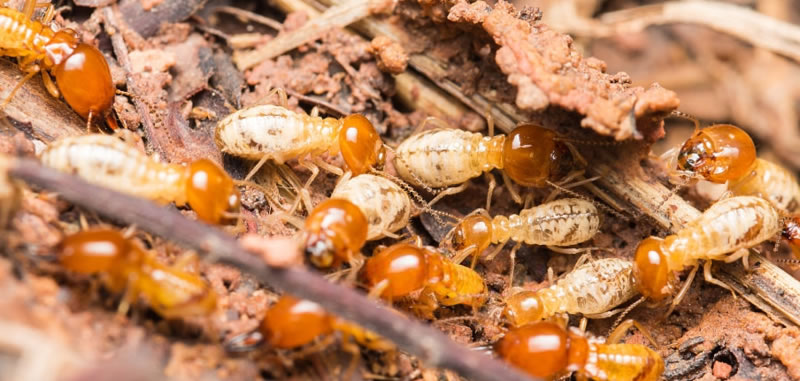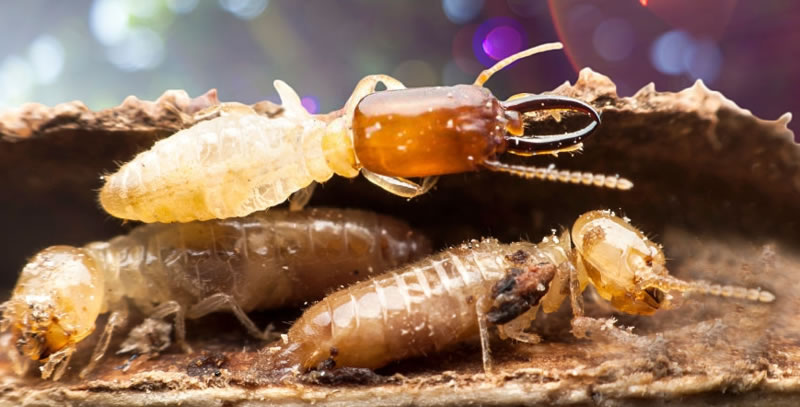Guide to Different Termite Types of Australian Termites
Are you an Australian homeowner worried about termites? Termites can cause serious damage so being vigilant is essential.
Don’t assume that your home insurance policy is going to reimburse you for the damage either. Most home insurance policies do not offer coverage for structural damage due to termites.
In this article we will learn how to identify the most common Australian termites and their habits.
The 9 Primary Types of Australian Termites
You’ve probably seen a termite before without even realizing it. People often get them confused with other household pests, such as flying ants, wasps, and regular ants. Australia contains about 360 different species of termites. However, there are only 9 specific types of Australian termites which damage homes with cellulose and timber-based materials in them.
Termites serve a very specific purpose in ecosystems across Australia and the rest of the world. Their purpose is to recycle all the dead plant matter (cellulose) and timber (wood) in nature. In addition, many wild animals depend on termites as a vital food source. Humans, on the other hand, do not want to eat termites, nor do we want them recycling the timber of our homes.
What separates the different species of termites apart are their feeding habits. The areas where they’re inhabiting, and the severity of the infestation are all key indicators as to which species of termites you’re dealing with.
1. Coptotermes Lacteus
Description
These are subterranean termites which nest underground and build mud tunnels to reach the surface.
Family
Better known as the “milk termite,” the Coptotermes lacteus belongs to the family of termites called rhinotermitidae. This termite family likes to feed on wooden fibres and structures, which causes them a great amount of damage.
Identification
The Coptotermes lacteus can be identified by analysing the solider termites of the species. Their heads have a very distinctive appearance which consists of pigmentation and a lot of heavy armour.
Life Cycle
The Coptotermes lacteus do not transition completely as they go through their metamorphosis process. They start out as eggs and then become nymphs. The nymphs may either be soldier or worker termites for their colony. Although they’re comprised of both males and females, they’re all sterile.
Once the colony matures to a greater degree, the termites produce alates. These termites reproduce while losing their wings in the process. Eventually, the alates become a queen or king of their own colony.
Food
The Coptotermes lacteus love to eat weathered wood, which is wood that’s been exposed to air for a long time. Some of their targets include dead trees, tree stumps, and any structure made from timber.
Habitat
The Coptotermes lacteus build their nests with mounds of sand, clay, saliva, plant material, and excreta. These are large mounds with a diameter of 2 meters above ground, so they’re definitely noticeable.
These termites are more found more in rural areas, such as pastures, reservations, and forests.
Significance
The Coptotermes lacteus can mean trouble for your home structure if it has weathered timber that is touching the soil below. Most home insurance policies don’t offer coverage for damage caused by these termites.
Distribution
The Coptotermes lacteus is commonly found in the western slopes and coastlines of Australia. You can find them mostly in the eastern region of New South Wales, southeast Queensland, eastern Victoria, and the Australian Capital Territory.
2. Coptotermes-Acinaciformis
Description
The Coptotermes acinaciformis is commonly mistaken for a white ant because they are both the same colour. They’re subterranean termites with colonies of various castes, just like ants.
Family
The Coptotermes acinaciformis belongs to the family of termites called rhinotermitidae.
Identification
The worker termites have totally white bodies and no eyes. The soldier termites have brown heads, huge jaws, and no eyes.
Life Cycle
The Coptotermes acinaciformis has winged male and female termites called alates. After they leave their nest, they mate with each other and look for a place to create a new colony. Many winged termites leave their nests each year, but few of them survive. The female alates that successfully create their nests will become a queen and lay eggs.
When the eggs hatch, the nymphs of the family are born. After about 3 months of moulting, the nymphs will turn into a worker termite, winged alate termite, or soldier termite. A worker termite and soldier termite can survive up to 3 years.
Food
The Coptotermes acinaciformis love to eat cellulose. You can find this material in logs, plants, and trees. The termites love to feed in environments which are moist and dark. They’ll leave their nest and travel up to 50 meters to get their food.
Habitat
Since the Coptotermes acinaciformis are subterranean termites, their nests are constructed underground. You can also find them in darker locations like under patios, inside a tree trunk, or under flooring.
Significance
Australia classifies the Coptotermes acinaciformis as the most destructive of all the termite species in the country. If your home is made from timber material, then be on the lookout for these termites.
Distribution
You’ll find Coptotermes acinaciformis all over Australia. That means every Australian state has these termites in it.
3. Dampwood Termites
Description
Dampwood termites are also referred to as rotten wood termites. They love to feast on decaying wood and inhabit areas with a lot of moisture in the air.
Family
This species of termites belong to the Termopsidae family.
- Identification
Dampwood termites are easier to notice because they’re bigger than your average subterranean termite or Drywood termite. They also have big heads and a pair of mandibles sticking out of them. The soldier termites have brown or black mandibles that are quite long.
The mandibles stick out of their flat brown heads. Alate termites have a dark brown body and eight brown wings. Their length can be as much as 25 millimetres. Nymph termites have a creamy complexion with spots on their abdomens.
Life Cycle
There are three stages to the life cycle of Dampwood termites. The egg stage and nymph stage are the first two stages, and they each last for one month. The worker termites assist the nymphs with their moulting phase. Once they become adult Dampwood termites, their life can go on for several years.
It is easy to confuse the nymphs with the adults because they have similar aesthetics. This is due to the moulting in which the nymphs go through to achieve this grown-up appearance. To produce more eggs, a male and female alates find a damp piece of wood and make a chamber in there. Their colonies are not as big as other termites’ colonies.
Food
Dampwood termites love to eat the cellulose materials found in plants and rotting wood. Sometimes they eat termites from their own colony if they’re hurt or injured.
Habitat
There must be a lot of water, humidity, and moisture content for Dampwood termites to survive somewhere. As their name indicates, they love to choose damp wood because it has a lot of moisture content. Dampwood termites may create their nest in fallen branches, tree stumps, or other wood that is somewhat buried in the ground.
Significance
The good news is that Dampwood termites don’t typically cause serious damage to the wood of homes and other structures. But if you have wood that is already damaged from something else, then Dampwood termites might be interested in it.
Distribution
Due to their demand for moisture content, Dampwood termites like coastal areas and highland areas. You’ll find them in South Australia, Victoria, New South Wales and Queensland.
4. Drywood Termites
Description
Drywood termites, also known as Cryptotermes brevis, originally come from the West Indies. They like to build their nests inside of wood structures without any water around it.
Family
Drywood termites are part of the Kalotermitidae family of termites.
Identification
You can easily identify the Drywood termites by their pale brownish body and darker wrinkled head. Their huge mandibles have teeth as well. The length of the body is anywhere from 2 to 6 millimetres. It is shaped like a small cigar.
Life Cycle
Drywood termites build colonies rather than nests. Each type of Drywood termite is ranked within a caste structure. Reproduction of the Drywood termites is the responsibility of the king and queen termites of each colony. If the colony is new, they’ll likely perform additional tasks to compensate for the soldiers and workers not born yet.
The queen’s eggs are shaped like kidneys. Once the eggs enter the larvae stage, the pseudergates care for them throughout their development. The larvae moult numerous times enough they develop into pseudergates themselves. The pseudergates end up working in the colony doing the various tasks of a worker termite.
The pseudergates eventually develop into nymphs and start growing wings. A few more moults later and they’re finally reproductive termites called alates. The male and female alates become the king and queen and start a new colony of their own.
Food
Drywood termites like to consume cellulose after breaking down wooden material. While they’re consuming the cellulose, the termites extract just enough water from the wood to survive.
Habitat
It shouldn’t be too hard to figure out where Drywood termites like to inhabit. They choose dry wood instead of decayed wood. Drywood termites like to stay above ground. They’re target fallen wood debris for creating their tunnels and colonies. These termites are the opposite of Dampwood termites which prefer decayed wood with a lot of moisture in it. Drywood termites require low moisture wood instead.
Significance
Drywood termites can cause structural damage to your home if it consists of hardwood timbers or softwood timbers. These termites could damage a wooden object of any size, even something as small as a picture frame.
Check any wooden doors and tables in your home. If you see blisters or small holes in the wood which are no more than 2 millimetres in diameter each, then you probably have a Drywood termite infestation.
Distribution
Drywood termites originally come from the West Indies. They were able to spread throughout the world by getting onto wooden ships undetected. It didn’t take long before the termites were in the United States, Madagascar, South Africa, South America, Central America and Australia. So, for you Australians, you can expect Drywood termites in every state.
5. Heterotermes Ferox Termite
Description
The Heterotermes ferox are subterranean termites, but they don’t build mounds for their nests. They prefer to feed on wood that is touching the soil.
Family
The Heterotermes ferox come from the rhinotermitidae family of termites. The sub-family is the heterotermitinae.
Identification
The Heterotermes ferox are between 3 and 7 millimetres long. Their body is white and shaped like a cigar. The head is light brown and shaped like a rectangle. Each side of the head is parallel to one another. They have no teeth present. Their mandibles are black and curved like a sabre.
Life Cycle
The colony uses a caste system. The king and queen termites create new colonies where the younger termites are nurtured and fed. The soldier termites are there to defend the colony and keep the other termites safe. The worker termites gather food, feed the other termites, and help build nests.
When an egg hatches, they become nymphs. After a series of moults, the nymphs will turn into worker termites, soldier termites, or alates. The alates are the winged reproductive termites that become the king and queen of their own colonies.
Food
The worker termites gather food for the other termites of the colony, including the queen. They like to consume anything wooden so that they can extract cellulose from it. After the worker termites digest their cellulose and expel it from their bodies, other termites in the colony will consume it for food as well.
Habitat
The Heterotermes ferox prefer to build nests in wood that is touching soil directly. These could be logs, stumps, fallen branches, or other pieces of wood. Their favourite source of wood comes from Eucalyptus gum trees. If you have these trees in your area, then you’ll likely find these termites around.
Significance
Damp wooden structures are at risk of getting destroyed by Heterotermes ferox. If weathering has decayed any of the wooden fences, poles, patios, or furniture in your yard, then you can expect Heterotermes ferox to damage them.
Distribution
The Heterotermes ferox can be found in the southern areas of New South Wales, Western Australia, Australia Capital Territory, Queensland, and Victoria.
6. Nasutitermes Exitiosus
Description
The Nasutitermes exitiosus are snouted termites which are native to Australia, particularly the state of New South Wales and the city of Canberra in the Australian Capital Territory.
Family
The Nasutitermes exitiosus belongs to the higher family of termites called Termitidae.
Identification
You can identify the Nasutitermes exitiosus by looking for their long snout. This is actually their two mandibles fused together. The colour of their bodies is either creamy or white. Their head colour is dark brown.
Life Cycle
There are 4 castes to the life cycle of the Nasutitermes exitiosus. A king and queen create the colony and reproduce to form more termites. There is even a supplementary queen that creates sub-colonies to the main colony.
The worker termites gather food and feed the young termites. The soldier termites protect the colonies. The alates create colonies of their own and reproduce.
Food
The Nasutitermes exitiosus like to go after hardwood and sapwood for their food. Their favourite food source is the eucalyptus gum trees. The termites do not like rotted wood.
Habitat
The Nasutitermes exitiosus love to inhabit urban areas for building their colonies. They’ll choose a location next to a eucalyptus gum tree if they can. You can see their colonies because they consist of mounds that are between 30 to 75 centimetres high above the ground. Their width is 100 centimetres in many cases. If the termites cannot find a tree or stump for their colonies, they’ll find their way underneath your flooring and within your wall cavities.
Significance
Since the termites like to build their nests underneath buildings and structures, they can cause a lot of damage if these are wood structures. The worst part is they go unnoticed for a long time. It is only after the damage has started do people finally discover these termites on their property.
Distribution
The Nasutitermes exitiosus mostly exists in Canberra and New South Wales. However, there are small numbers of these termites in Western Australia as well.
7. Nasutitermes Walkeri Termite
Description
The Nasutitermes walkeri are called tree termites because they’re arboreal termites which build their nests in trees.
Family
The Nasutitermes walkeri belong to the nasutitermitidae family of termites.
Identification
The bodies of the Nasutitermes walkeri are yellowish-brown and 5 to 7 millimetres in length. Their heads are round with a narrow beak at the end. Their mandibles are long and straight.
Life Cycle
There are 3 stages to the life cycle: egg, nymph, and adulthood. The Nasutitermes walkeri queen is different than other species of termite queens because she lays down one egg at a time. The eggs hatch nymphs, which moult into either worker termites, soldier termites, or alates. The nymphs take up to 4 months to become an adult.
Food
Humus, fungi, moss and decayed wood are the four main foods. Only the worker termites consume these food sources directly. The worker termites have intestinal enzymes which allow them to digest the wood. When they go back to their nests, the other termites feed off the excreted waste of the workers.
Habitat
Since the Nasutitermes walkeri are tree termites, they build their nests in trees. They target either a huge branch or the trunk of the tree. The termites build underground tunnels which lead from the soil to the tree base. This makes it easier for the worker termites to access food sources and deliver excrement food to their colony.
Significance
The Nasutitermes walkeri love to attack the hardwood of homes and buildings. Structures are more at risk if decaying wood, humidity, or bad ventilation are present. If left undiscovered, it’ll only take 3 months for these termites to destroy the walls and roof of your home.
Distribution
The Nasutitermes walkeri exist in mountainous regions and coastal regions of Australia. You’ll find them mostly in southeast Queensland and northeast New South Wales.
8. Schedorhinotermes Intermedius
Description
The Schedorhinotermes intermedius are subterranean termites that are found underneath wood that is buried or touching the soil. They are highly destructive.
Family
The Schedorhinotermes intermedius come from the termite family known as Rhinotermitidae.
Identification
Both soldier termites are huge. The major soldier has a body length of 6 millimetres, and the minor soldier has a body length of 4 millimetres. The major soldier features a fat head and a thick exoskeleton. The minor soldier features a small, narrower head.
Their body colour is yellowish-brown, but more on the pale side. They have inner faces with mandibles and teeth. The reproductive alates are larger and have a darker colour to them. Their eyes are compounded.
Life Cycle
The Schedorhinotermes intermedius termites are unique because the soldier termites have two classes; the major soldiers and minor soldiers. In a new termite colony, the nymphs turn into minor soldiers first. Once the colony grows and expands, more major soldiers are produced.
Both soldier termites protect their colony. They depend on worker termites to feed them with their excrement. Everything else about the life cycle is standard. There are a king and queen that produce eggs. The eggs hatch and become nymphs. The nymphs will moult into workers, soldiers, or alates.
Food
The worker termites like to consume the cellulose found in wood. They use their intestinal enzymes to digest the wood and produce excremental food for the termites in their colonies. Fungi and organic materials are their primary food sources.
Habitat
The Schedorhinotermes intermedius like to build their nests underneath houses, patios, and inside tree stumps and dead trees. If any piece of wood is touching the soil, these termites could very well be nesting underneath it.
Significance
The Schedorhinotermes intermedius are considered very dangerous because they can cause a lot of damage to any structure made of wood. While other termites may take a long time to cause damage, the major soldier termites can cause severe structural damage a lot more rapidly. Schedorhinotermes intermedius termites are more threatening to Australian homes than fires and storms.
Distribution
The Schedorhinotermes intermedius are primarily found along the coastline of Australia, especially the western slopes and the Great Dividing Range.
9. Coptotermes Frenchi
Description
The Coptotermes frenchi are subterranean termites which are smaller than the similar looking Coptotermes acinaciformis termites.
Family
The Coptotermes frenchi come from the Rhinotermitidae family of termites.
Identification
The Coptotermes frenchi have pear-shaped heads with mandibles sticking out of them. Their bodies and mandibles are smaller compared to the Coptotermes acinaciformis. Their average length is 4 millimetres.
Life Cycle
The Coptotermes frenchi life cycle is standard. The queen lays an egg, the egg hatches into a nymph, and the nymph spends the next several months going through various stages. The nymph eventually matures into an adult termite, which could be a worker termite, soldier termite, or reproductive alate.
Food
The primary food source of the Coptotermes frenchi is cellulose-based wood. These termites love fresh Eucalyptus plum trees, but they’ll also feed on the wood of utility poles, fence posts, window frames, and home structures. As a last resort, the termites will find cellulose to consume in wallpaper, cardboard, furniture stuffing, and cotton.
Habitat
The Coptotermes frenchi love dark wet areas. You can often find them in the flooring and subflooring of your home’s dampest areas, such as your bathroom. Generally, the Coptotermes frenchi build their nests in the lower section of tree trunks. A root crown area is a good place for them to go.
Significance
The Coptotermes frenchi termites are highly destructive to all wooden buildings and structures of Australia. When these termites are even slightly disturbed, they’ll run away quickly. Basic activities like landscaping and gardening might scare them away. Unfortunately, the termites will come back once the disturbing activities go away.
Distribution
The Coptotermes frenchi are natural inhabitants of Australia. They’re commonly found in New South Wales, the coasts of Queensland, Western Australia, South Australia, Victoria, and Australian Capital Territory.
Conclusion
There are 9 different types of termites in Australia which pose a threat to your home structure. Now you know how to identify these termites so that you can take the best course of action to eliminate them.

